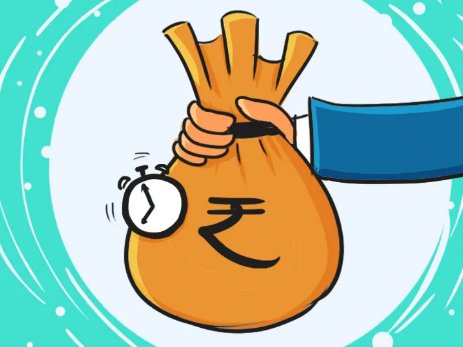Mumbai: You may not have noticed it but the actual interest rate that you are getting on your bank deposits and investments in small savings schemes has fallen into the negative territory.
This means that the return on investments is not yielding any positive value but only covering for higher inflation and savings may actually be falling in their real value.
The situation has emerged in wake of a sharp fall in deposit rates due to aggressive rate cuts by banks in response to the Reserve Bank of India’s (RBI) reduction in the benchmark rates, coupled with a rise in consumer prices. What this meant is that the real interest rate (actual return that you get on your savings minus inflation) has been pulled into the negative territory, disincentivising savings.
As per the latest RBI data, household financial savings had declined sharply to 10.4 per cent of the nation’s gross domestic product (GDP) in the July-September period of FY21, down from 21 per cent of the GDP in Q1 of FY21. It is estimated to have further declined in the December quarter as consumption intensified and options to save were disincentivised.
A look at the official inflation data based on wholesale price index (WPI) makes things clearer on the trajectory for returns on savings. The data released on Thursday showed WPI inflation accelerated to 7.4 per cent in March, higher than the 27-month high of 4.2 per cent in February. This is the highest inflation rate recorded in the new data series. The previous high was 7.4 per cent in October 2012.
Even if one looks at inflation based on consumer price index (CPI), the trajectory has been going up and up. After falling to 4.06 per cent in January, CPI inflation inched up to 5.03 per cent in February and further to 5.52 per cent in March 2021. Food inflation also increased recently; however, the concern is the elevated level of core inflation. Core inflation has not come down and has remained above 5 per cent since June 2020 and touched 6 per cent in March 2021.
If we compare the developments on inflation with the rate of interest prevailing on prime savings instruments, the plight of the common man becomes clearer.
Interest on five-year time deposits is being maintained at 6.7 per cent in Q1 of FY22, the Senior Citizen Savings Scheme is earning 7.4 per cent, PPF and NSC are offering interest of 7.1 per cent and 6.8 per cent for the coming three months, five-year recurring deposits is offering 5.8 per cent, and one-year to three-year time deposits are fetching 5.5 per cent interest rate.
Similarly, interest on five-year time deposits is being maintained at 6.7 per cent, Kisan Vikas Patra is offering 6.9 per cent interest while the Sukanya Samriddhi Account scheme is offering interest rate of of 7.6 per cent. Not to mention savings deposits that is giving around 4 per cent.
In most of the savings instruments, the real rate of interest has fallen sharply or fallen off the cliff into the negative territory, barring the Sukanya Samriddhi Account scheme that is still offering some positive returns after taking inflation into account.
The situation would have been worse had the Finance Ministry not withdrawn a decision to reduce interest rates in small savings instruments by upto 110 basis points from April. The rate of interest on these had already fallen in April 2020 by about 140 basis points.
“Present, interest rates will further pressurise savings which have been hit hard by the Covid pandemic. However, if stricter lockdowns are imposed, then the rate can go up temporarily again as it will be hard to spend disposable income, but this is unlikely to repeat the extent of last year shot up in savings rate as the lockdown stringency levels are easier than last time,” said Madhavi Arora, Lead Economist, Emkay Global Financial Services.
According to a research report from Brickwork Ratings, CPI inflation is expected to remain close to the upper bound target of 6 per cent in Q1 FY22. “Despite the favourable base effect, the recent restrictions to contain the virus spread and relatively higher oil prices coupled with surplus liquidity created by the OMO of Rs 3.13 trillion in the last fiscal, and increase in money supply arising from foreign exchange management, can pose upward risks to inflation,” the report said.
This would mean while the RBI may maintain its accommodative stance while keeping policy rate unchanged at next monetary policy committee meeting next month, common people will continue to suffer erosion of their wealth with savings fetching negative or no real returns.
“Low interest rates are critical for the economic revival of the country. Meanwhile, inflation also needs to remain within a specific target,” Pranjal Kamra, Founder and CEO, Finology, had said earlier.
IANS
